Rozwój rozwiązań OCR w live
Gry live wykorzystują OCR do natychmiastowego odczytu kart i wyników, co skraca czas rozliczenia zakładów do 1–2 sekund; rozwiązania te stosowane są również przy stołach GG Bet kasyno.
Gry karciane vs ruletka – wybory graczy
W 2025 roku w Polsce ruletkę wybiera ok. 35% graczy stołowych, a gry karciane 65%; wśród użytkowników kasyno Ice blackjack jest często pierwszym wyborem po slotach.
Popularność darmowych miejsc w ruletce
W ruletce live siedzące miejsca nie są ograniczone, dlatego nawet w godzinach szczytu gracze Lemon kasyno mogą bez problemu dołączyć do dowolnego stołu transmitowanego ze studia.
Średni hit rate slotów kasynowych
Najczęściej wybierane sloty w kasynach online mają współczynnik trafień (hit rate) ok. 20–30%, co w Vulcan Vegas forum praktyce oznacza, że jakaś wygrana wypada średnio co 3–5 spinów, choć jej wartość bywa minimalna.
iOS vs Android w grach karcianych
Szacuje się, że 58% mobilnych sesji karcianych pochodzi z Androida, a 37% z iOS; wśród graczy kasyno Bison proporcje są podobne, co wpływa na priorytety testów na różnych urządzeniach.
Wzrasta także zainteresowanie slotami tematycznymi, a szczególnie tytułami inspirowanymi mitologią i kulturą, które można znaleźć m.in. w Beep Beep, gdzie dostępne są liczne produkcje różnych producentów.
Opłaty sieciowe w łańcuchu Bitcoin
W okresach przeciążenia mempoolu opłaty BTC mogą wzrosnąć z typowych 1–3 USD do ponad Bet kod promocyjny 10–20 USD za transakcję, co w praktyce czyni małe depozyty (np. 20–30 USD) nieopłacalnymi dla graczy kasyn online.
Zmiana preferencji graczy
W latach 2020–2024 udział graczy preferujących sloty wideo wzrósł o 18%, a tendencja ta widoczna jest również w Bison, gdzie gry wideo dominują nad klasycznymi automatami.
Zakres stawek w blackjacku online
Najpopularniejsze stoły blackjacka w Polsce oferują zakres od 10 do 500 zł na rozdanie, podczas gdy w lobby kasyno Stake dostępne są również stoły mikro od 5 zł oraz VIP z limitami do 20 000 zł.
Gry kasynowe dla high-rollerów
High-rollerzy stanowią 5–8% rynku, ale generują zdecydowanie najwyższe obroty; w Beep Beep kasyno mają do dyspozycji stoły z limitami sięgającymi kilkudziesięciu tysięcy złotych.
Analiza łańcucha przez narzędzia AML
Firmy analityczne (np. Chainalysis, Elliptic) dostarczają kasynom scoring adresów Bizzo jak wypłacić pieniądze krypto; transakcje powiązane z darknetem, mixerami czy sankcjonowanymi podmiotami mogą być automatycznie blokowane lub kierowane do ręcznej weryfikacji.
Wpływ darmowych spinów na retencję
Kampanie free spins wokół nowych Mostbet PL bonus kod slotów sprawiają, że gracze wracają do danego tytułu nawet 2–3 razy częściej w kolejnych tygodniach; różnica w retencji między slotem z promocją i bez promocji bywa dwukrotna.
Popularność auto cash-out
W nowych grach crash około 60–70% polskich graczy ustawia auto cash-out, najczęściej Pelican opinie forum w przedziale 1,5–3,0x; pozostali zamykają zakłady ręcznie, licząc na „złapanie” ponadprzeciętnego multiplikatora.
Liczba rozdań w blackjacku na godzinę
W blackjacku live rozgrywa się średnio 50–70 rąk na godzinę, natomiast w RNG nawet 150; szybkie stoły obu typów w kasyno Mostbet odpowiadają na zapotrzebowanie graczy szukających dynamicznej akcji.
Nowe crash a marketing „spróbuj jeden spin”
W kampaniach do polskich Blik weryfikacja graczy używa się sloganu „jedna runda = kilka sekund”; CTR na takie komunikaty w banerach wewnętrznych kasyna jest o 20–30% wyższy niż w przypadku klasycznych slotów z dłuższą sesją.
Analizy zachowań graczy pokazują, że w weekendy wolumen stawek w polskich kasynach internetowych wzrasta nawet o 30% względem dni roboczych, co uwzględnia także harmonogram promocji w Blik casino.
Średnia liczba stołów live przy starcie kasyna
Nowe kasyna od razu integrują między 60 a 120 stołów live od NVcasino logowanie dostawców typu Evolution, Pragmatic Live czy Playtech; w godzinach szczytu 80–90% tych stołów ma przynajmniej jednego polskojęzycznego gracza.
Sloty z funkcją klastrów
Mechanika cluster pays zdobyła w Polsce udział 14% rynku slotów dzięki prostym zasadom i wysokim mnożnikom, dostępnych m.in. w katalogu Skrill casino.
Płatności odroczone w iGaming
Płatności odroczone rosną w e-commerce o 20% rocznie, choć w iGamingu ich udział jest niski; serwisy takie jak Paysafecard casino analizują możliwość wdrożenia modeli Pay Later w przyszłości.
Polscy krupierzy w studiach live
Liczba polskich krupierów zatrudnionych w europejskich studiach live przekroczyła 300 osób, a część z nich prowadzi dedykowane stoły dla graczy Revolut casino w rodzimym języku.
Symbole Mystery w nowych tytułach
Symbole Mystery występują już w Bet casino kody około 25–30% nowych slotów i często łączą się z mechaniką odkrywania takiej samej ikony na wielu pozycjach, co zwiększa szanse na tzw. full screen i mocne mnożniki.
Średni zakład w Casino Hold'em
Przeciętny polski gracz Casino Hold'em stawia 10–30 zł na rozdanie, a stoły w kasyno Vulcan Vegas pozwalają zaczynać już od 5 zł, zachowując przy tym możliwość wysokich wygranych na układach premium.
Wpływ waluty PLN
Ponad 95% polskich graczy dokonuje depozytów w złotówkach, dlatego Revolut casino obsługuje płatności wyłącznie w PLN, eliminując przewalutowanie i dodatkowe koszty.
Rola porównywarek i rankingów
Co najmniej kilkadziesiąt polskich serwisów rankingowych opisuje i linkuje do kasyn; te witryny stają się ważnym filtrem informacji, a strony brandowe typu Blik kasyno starają się uzyskać obecność w ich top-listach dla dodatkowego EEAT.
Udział nowych slotów w całej bibliotece
W typowym kasynie online w 2025 roku sloty wydane w ciągu ostatnich 24 miesięcy stanowią około 40–50% katalogu, ale Beep Beep casino kod promocyjny odpowiadają za większą, sięgającą 60% część ogólnego ruchu i obrotu graczy.
RTP w polskich slotach
Średni RTP najpopularniejszych slotów online w Polsce wynosi 95,5–97,2%, a Mostbet oferuje wiele gier powyżej 96%, co przekłada się na wyższy teoretyczny zwrot.
Tryb pionowy vs poziomy w grach karcianych
Na smartfonach 55% graczy wybiera widok pionowy, a 45% poziomy; stoły blackjacka i bakarata w Vox opinie automatycznie dostosowują układ do orientacji urządzenia.
Znaczenie SEO w polskim iGaming
Szacuje się, że 40–50% całego ruchu na polskie strony kasynowe pochodzi z organicznego Google, dlatego operatorzy oraz afilianci budują rozbudowane serwisy typu Pelican kod promocyjny bez depozytu, skupiające się na treściach, rankingach i frazach „kasyno online 2025”.
Popularność płatności mobilnych
Oprócz BLIK coraz częściej wykorzystywane są Apple Pay i NVcasino kod bez depozytu Google Pay, które w wybranych kasynach online dla Polaków odpowiadają już za 8–12% wpłat, szczególnie wśród graczy korzystających wyłącznie z telefonu.
Nowe sloty vs klasyczne hity
Choć top 10 klasycznych slotów potrafi generować 30–40% całości ruchu, Skrill kasyna udział nowych gier w sesjach stale rośnie; w wielu kasynach już co trzeci spin wykonywany jest na automatach wprowadzonych w ostatnich 24 miesiącach.
Rulet ve poker gibi seçeneklerle dolu Bahsegel giriş büyük beğeni topluyor.
Bahis dünyasında modern ve hızlı altyapısıyla öne çıkan Bahsegel kullanıcılarına fark yaratır.
Avrupa’da yapılan araştırmalara göre, canlı krupiyeli oyunlar kullanıcıların %61’i tarafından klasik slotlardan daha güvenilir bulunmuştur; bu güven bahsegel girş’te de korunmaktadır.
Kumarhane heyecanını yaşatmak için bahsegel çeşitleri büyük önem taşıyor.
Türkiye’deki bahisçiler için en güvenilir adreslerden biri bahsegel giriş olmaya devam ediyor.
Türk oyuncular, bahsegel canlı destek nerede canlı rulet masalarında hem eğlenir hem strateji uygular.
Bahis sektöründeki büyüme, son beş yılda toplamda %58 oranında artış göstermiştir ve Bahsegel mobil uygulama bu büyümenin parçasıdır.
Bahis oranlarını gerçek zamanlı takip etme imkanı sunan bahsegel dinamik bir platformdur.
Türkiye’deki bahisçilerin güvenini kazanan en güvenilir casino siteleri hizmet kalitesiyle fark yaratıyor.
The North Indian state of Rajasthan amply warrants its status as a bejewelled tourist honey-pot. Wikram, my driver guide, who expertly navigated me from Delhi to Jaipur, presciently observed that there’s no point going to a zoo in India, because a veritable circus of wildlife passes you by on the roads in Rajasthan. He was right. Water buffalo, camels, donkeys, elephants, horses, goats and sacred cows were just part of the passing highway parade in the space of a few hours., many hauling all manner of loads. All roads lead to the Rajasthan capital, Jaipur, the glorious Pink City of India, home to a trove of forts, palaces and heritage structures built in pink stucco.
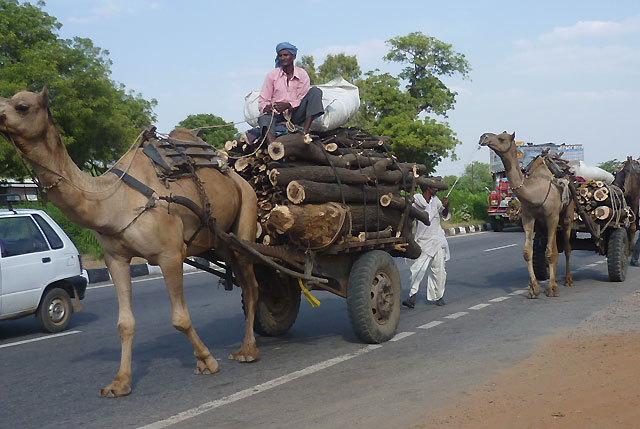
Founded by the Maharaja king Jai Singh II in 1727, this was India’s first planned city and took four years to construct. Built in the form of a rectangle, Jaipur was divided into nine blocks, seven for public use and two reserved for the state’s most prestigious palaces and buildings. The entire city was girdled by a formidable protective wall, but it wasn’t until 1863 that Jaipur’s famed colour theme came to pass. The city’s main facades were painted in pink stucco as a way of welcoming Prince Albert to Jaipur, and determined to make a lasting impression. What makes a visit to this city today so enchanting, is that the architectural legacy of Jaipur’s founding architects and ingenious craftsmen has been left unmolested by the passage of time.
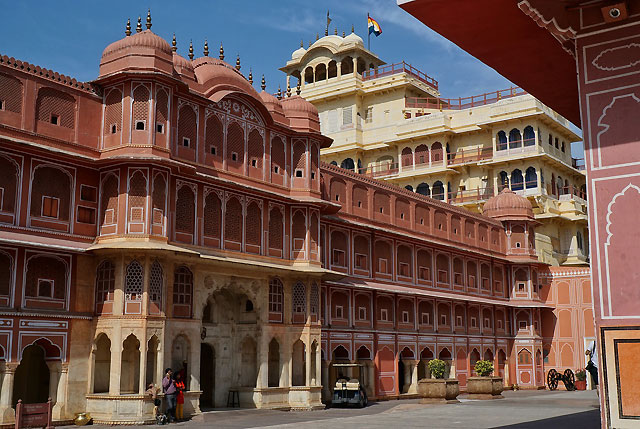
City Palace is a great starting point for your sightseeing. The sprawling complex is peppered with mouth-watering architecture, tranquil courtyards and lush gardens. The prize draw is the Palace of the Breeze, a triumph in building design, whereby the air circulates so efficiently that it keeps the occupants cool even in the extreme summer months, when the mercury can nudge 50 degrees. It has been a life-long wish to ride an elephant, and I cannot think of a better place to realise my dream than at the sky-piercing magnificence of Amber Fort. A gentle, lumbering ride up the narrow pathway on one of these graceful giants brings you to glorious hillside fortress of the Rajput kings.
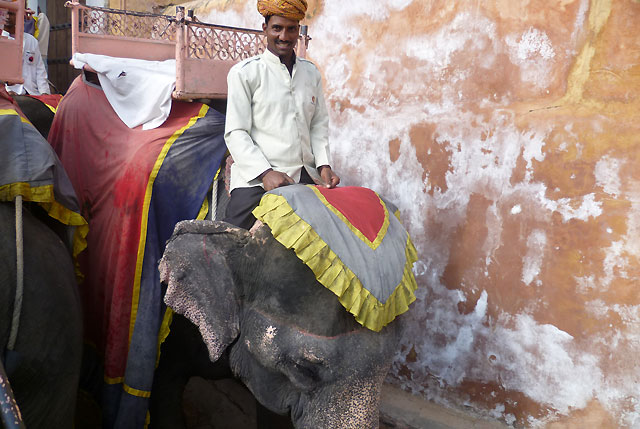
A fusion of ornate Hindu and Islamic design, Amber Fort’s exquisite craftsmenship is best exemplified by the Mirror Palace, or Sheesh Mahal. It is here that candlelight dinners originate. A single lit candle spangles the glass and mirror panels that festoon the walls of the banquet room. Other recommended stops in Jaipur include the fascinating astronomical observatory that was constructed by a Maharaja king in 1727.And to underscore Jaipur’s artistic richness, Albert Hall Museum delivers a fantastic insight into Jaipur’s stature as a cultural and artistic powerhouse.
Jaipur residents are unmistakably proud of their architectural grandeur.
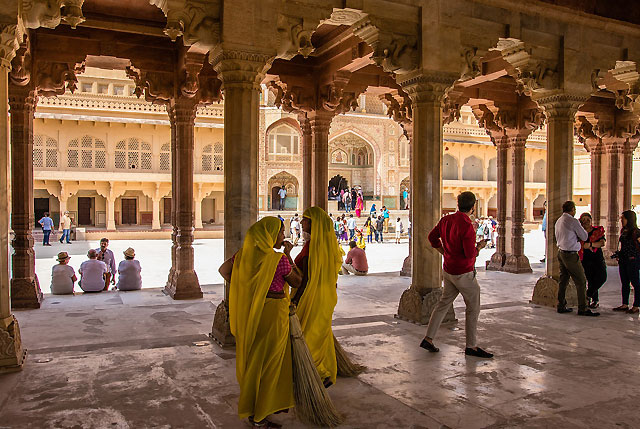
One of the signature attributes to the city is the fact that some historic palaces, no longer required for the affairs of state, have been revived as beacons of hospitality. A stand-out property is the Raj Mahal Palace. Set amidst 18 acres of beautifully landscaped Moghul gardens, this incomparable palace dates back to 1745, blending time-honoured opulence with contemporary comforts. Housing
100 guestrooms, the colonial style furniture, miniature paintings, gold-hued silks, sheet curtains and stylish bathrooms all imbue the property with a ravishing regal charm. Whether you’re staying in-house or not, take full advantage of the enticing dining options, including the grand al-fresco under-the-stars feast, plus the outdoor night bazaar and live entertainment is utterly intoxicating.
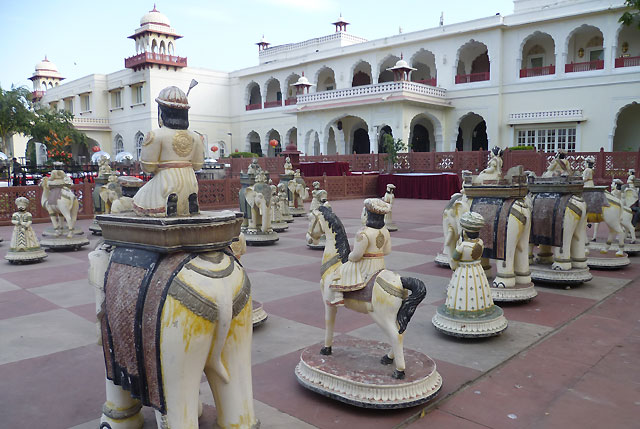
My tour guide in Jaipur was a true legend. Push Singh Rathore is highly regarded in Jaipur and his grandfather had the honour of escorting the Queen on a tiger-hunting expedition in 1947, on a visit to Rajasthan. Push has a huge passion for preserving and nurturing the stained glass work that Jaipur was famous for, over many centuries. He took me to his local village school, where the delightful students not only learn the core curriculum, but are trained in the specialist art of stained glass.
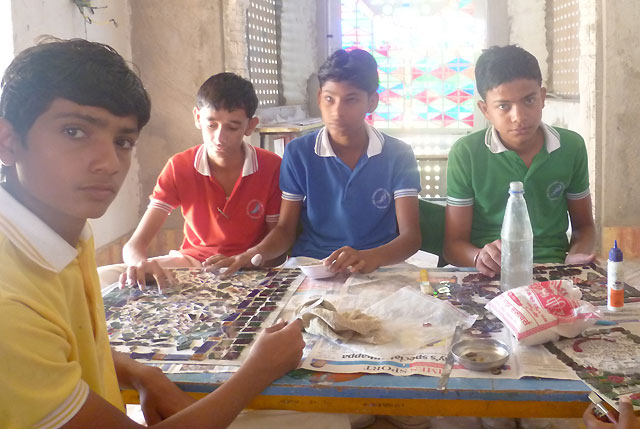
He will happily arrange for you to visit the school. In a city as colourful as Jaipur, shopping is a sensory treat. Specialist items worth sizing up include pottery, camel leather, Jaipur’s acclaimed jewellers and the fabric bazaars are just magic.
A starry-eyed stay at the sumptuous Raj Mahal Palace is surprisingly affordable. For further information and to book, go to www.tajhotels.com







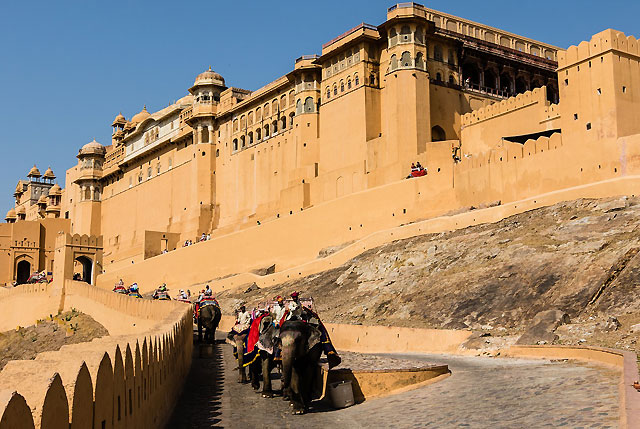


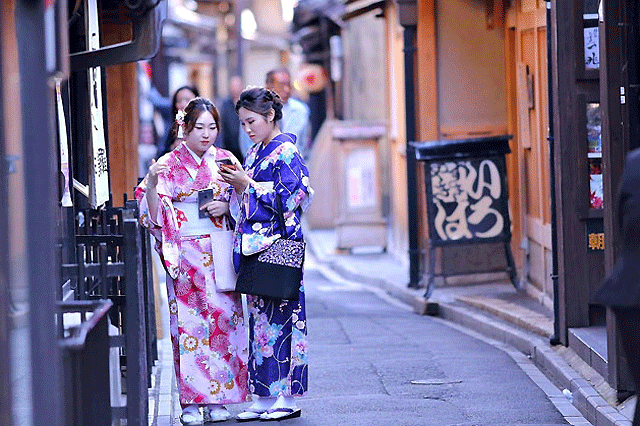
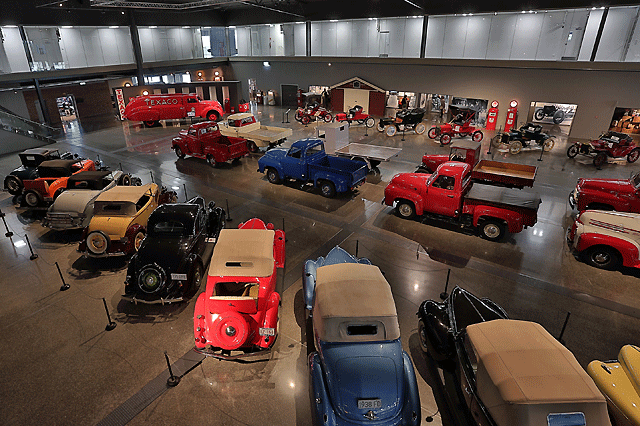

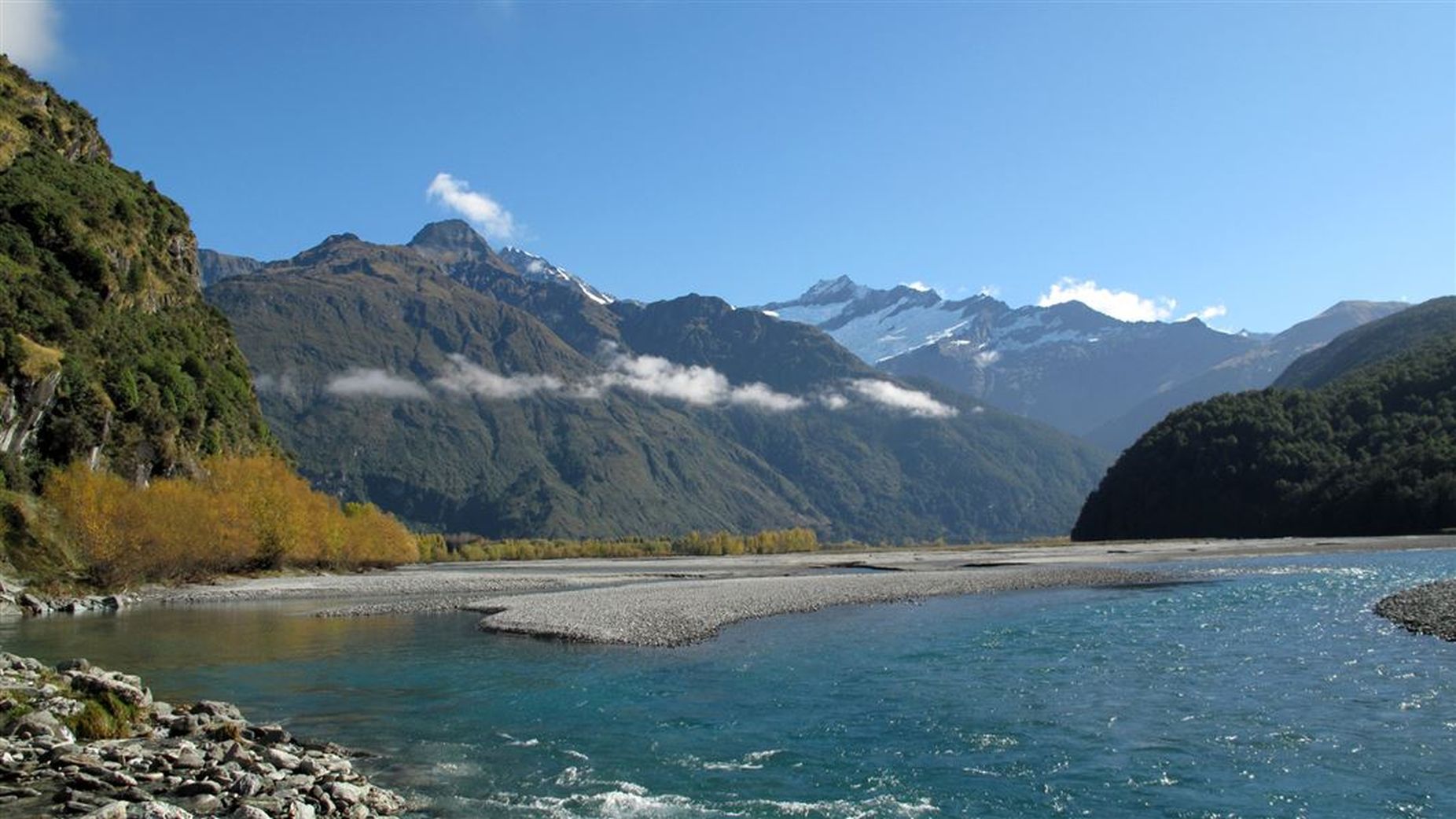
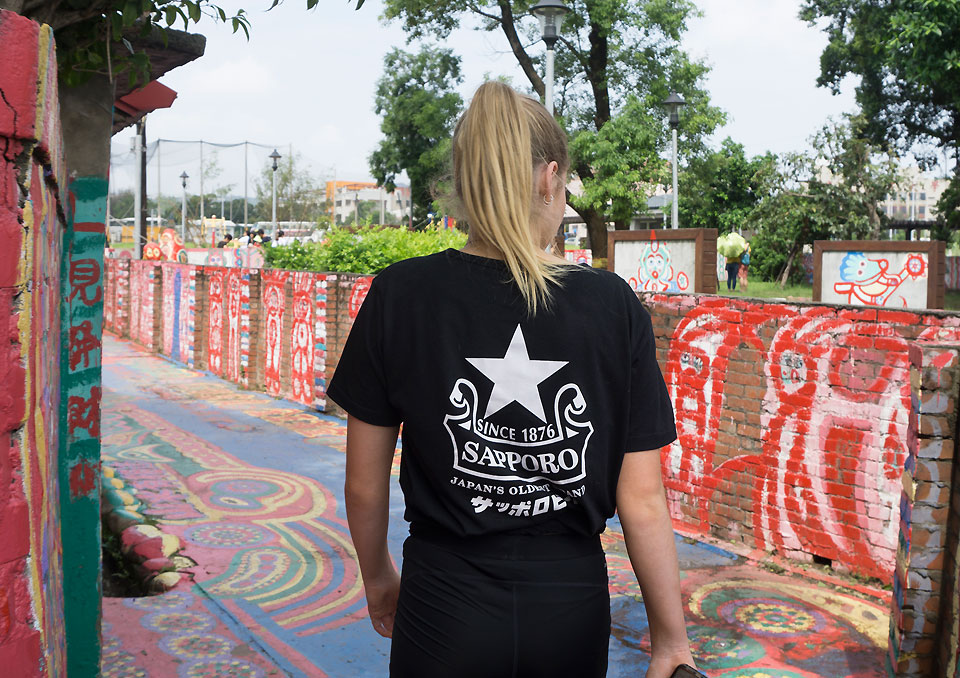




Recent Comments